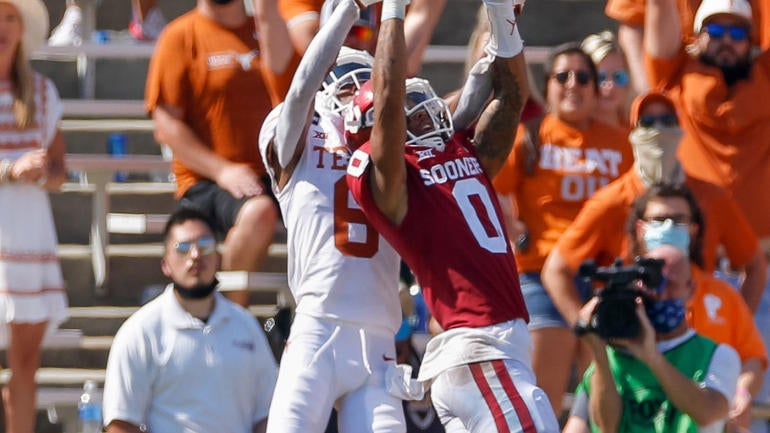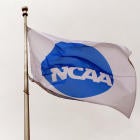
Just nine days after word leaked that Texas and Oklahoma were in talks regarding a landscape-changing move from the Big 12 to the Southeastern Conference, the seismic shift is officially complete. Following Thursday's unanimous vote by the SEC's chancellors and presidents to invite the schools for membership starting in 2025, the Texas Board of Regents and Oklahoma Board of Regents met Friday, where both schools officially approved the move by accepting the invitations.
"Today's action by the Board of Regents is in the best interests of UT student athletes, the UT Austin athletics program overall, and the university," University of Texas system chancellor James Milliken said in a statement. "This move ensures a strong future for an outstanding athletics program, providing the opportunity for our student athletes to compete at the highest levels."
The fallout within college sports is expected to be far-reaching as the Big 12 will be left without the two flagship schools of its (now formerly) 10-member conference. With Texas and Oklahoma departing, the conference's members face a choice of whether to stay together and rebuild or disband and strike out on their own to seek alternatives.
"After thorough consideration and study, it became obvious that standing pat would mean falling behind," Oklahoma athletic director Joe Castiglione said.
While Texas and Oklahoma have stated their intent to remain in the Big 12 until its current grant of rights expires in 2025, their moves to the SEC could be expedited if the Big 12 dissolves or if the schools are willing to pay hefty exit fees.
Ramifications loom for the potential expansion of the College Football Playoff, as well. Proposals for a move to a 12-team CFP by as early as the 2023 season hinged on the previous conference structure, and Pac-12 commissioner George Kliavkoff told CBS Sports' Dennis Dodd this week that CFP expansion is "certainly going to be readdressed" in light of conference realignment.
The SEC, meanwhile, has solidified its standing as the top conference in college sports. The league has now grown to include 16 total members, including 11 of the top 17 revenue-generating universities in the NCAA, per USA Today's most-recent database of athletic department finances. The league officially announced the addition of the two schools Friday with a statement touting the academic and athletic success of each university.
"This is an important moment for the long-term future of the Southeastern Conference and our member universities," SEC commissioner Greg Sankey said in the statement. "Oklahoma and Texas are outstanding academic institutions with two strong athletics programs, which will add to the SEC's national prominence. Their additions will further enhance the already rich academic, athletic and cultural legacies that have been cultivated throughout the years by our existing 14 members. We look forward to the Sooners and Longhorns competing in our Conference starting in the 2025-26 academic year."
And thus, the book is closed on a quarter-century Big 12 relationship with Texas and Oklahoma. In fact, the conference might not have existed in the first place had former Longhorns AD DeLoss Dodds and former Sooners AD Donnie Duncan not had the idea to travel to New York in the early 1990s.
It was there the two AD power brokers pitched to advertisers the idea of a conference in the middle of the country that would reach from Iowa to Texas. At the time, Chevrolet was a major college football advertiser. Dodds made the comment that, in that footprint, "Chevy could sell a lot of pickups."
The possibility of the Big 12 took off from there. Those 12 schools initially projected to take 16% of the nation's TVs, including a large swath in Texas. The initial investment was with Liberty Communications, which paid $100 million for the first Big 12 rights. Liberty eventually turned into Fox.
















